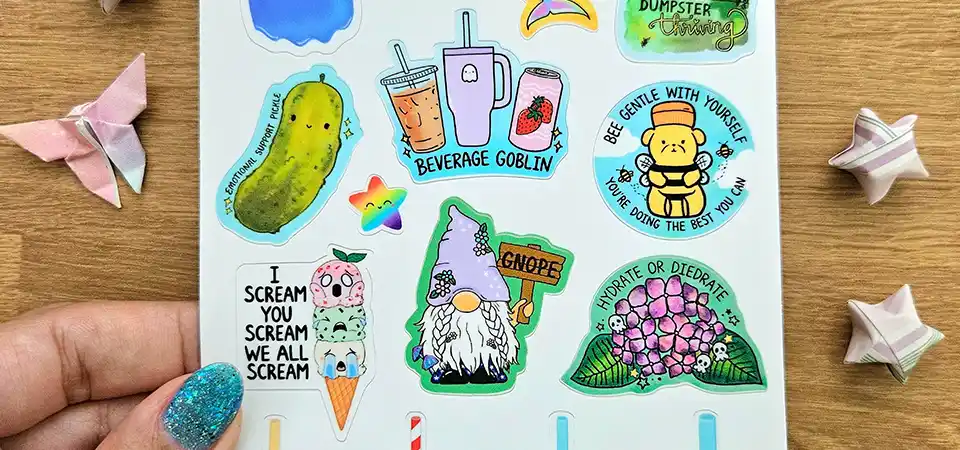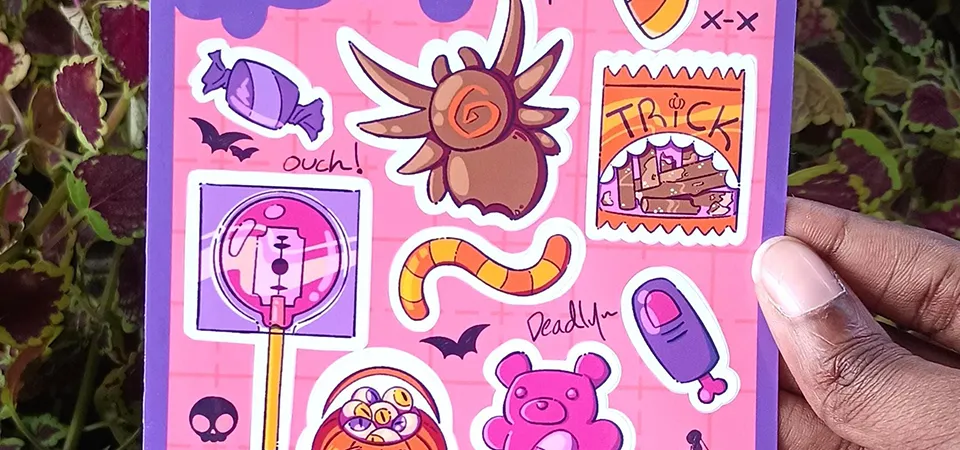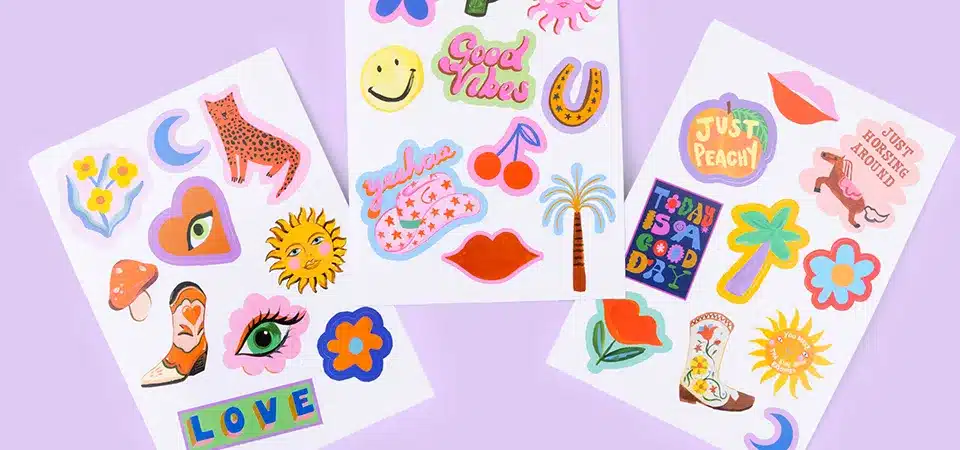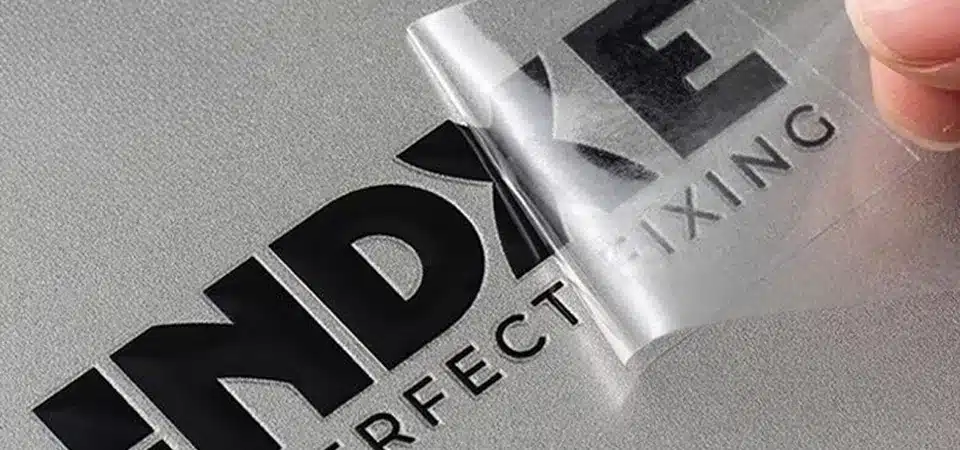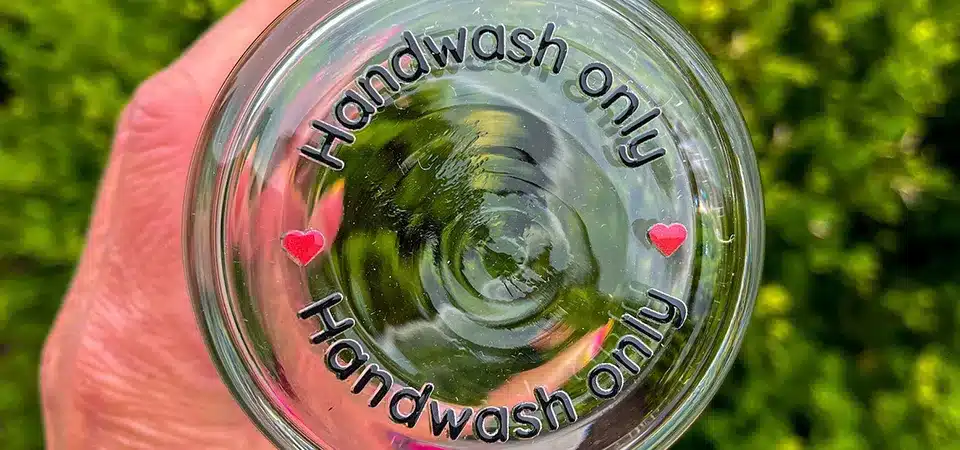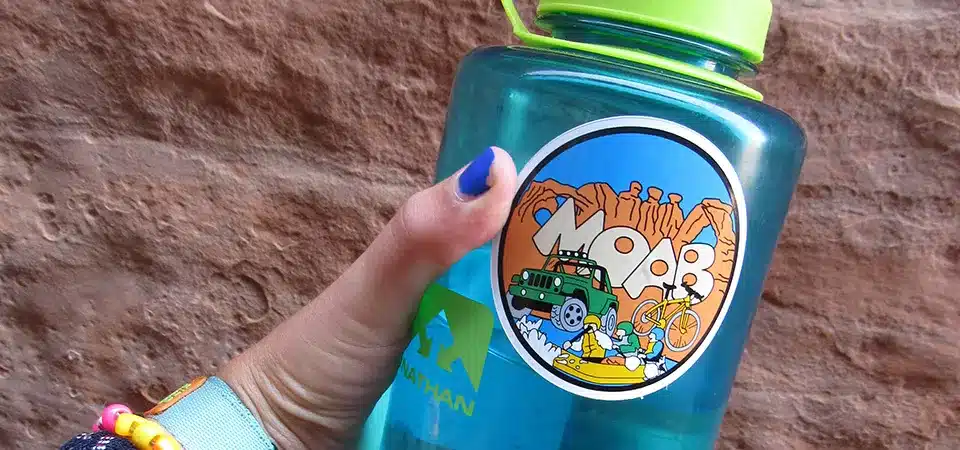You're frustrated by that ugly, half-peeled sticker. You try to scrape it off, but it just rips, leaving behind a sticky mess that attracts every speck of dirt and dust.
The secret is matching the removal method to the surface and the adhesive. Use heat, oil, or white vinegar to safely lift most stickers and glue without damaging glass, plastic, or wood. Then, wipe the area clean with soap and water.
As someone who works with stickers every day, I can tell you there's a simple science to getting them off cleanly. It’s all about breaking down the correct part of the sticker—either the paper or the glue—without harming the item underneath. The biggest mistake people make is getting impatient and scraping too hard. A little patience and the right household item will almost always work better than brute force. Let me show you the methods I use all the time.
Why are some stickers so stubborn to remove?
You peel one sticker off cleanly, but the next one becomes a torn, sticky disaster. Why is one so easy while another is an absolute nightmare to remove?
Stickers use different adhesives. Permanent glues are designed to bond over time, while removable ones have less tack. The sticker's material (paper vs. vinyl) also affects how easily it peels in one piece.

In my business, we choose specific adhesives and materials based on how the sticker will be used. This choice determines how hard it is to remove later. Understanding this helps you pick the right removal tool.
Sticker Materials and Adhesives
- Paper Stickers: These are the most common culprits for tearing. Paper absorbs moisture and has very little strength, so it shreds easily when you try to peel it. The adhesive is often left behind because the paper layer falls apart.
- Vinyl Stickers: These are plastic-based and much more durable. They usually peel off in one piece, but they can leave behind a sticky residue. This is especially true if the sticker is old or has been exposed to a lot of heat and sun.
- Adhesive Types: The glue itself is a major factor.
| Adhesive Type | How it Works | Best For |
|---|---|---|
| Removable | Low tack, designed for temporary placement. | Laptop stickers, temporary labels. |
| Permanent | High tack, creates a strong bond over 24-48 hours. | Product labels, warning signs, bumper stickers. |
| Pressure-Sensitive | The bond strengthens when you apply pressure. | Most modern stickers we use every day. |
An old permanent sticker on a warm surface is the toughest combination because the adhesive has "cured," or hardened, and bonded strongly with the surface.
What is the best sticker removal method by surface?
You found a method online, but you're scared it will scratch or stain the object underneath. Using the wrong technique can cause permanent damage and instant regret.
For glass and metal, use heat or strong solvents like rubbing alcohol. For plastic, always test solvents first and favor oil-based methods. For finished wood and paper, start with the gentlest options like an oil paste.

I always tell my customers to think like a doctor: first, do no harm. Start with the gentlest method for your surface and only get more aggressive if you need to. I made this table to help my clients choose the right starting point so they don't accidentally ruin their favorite things. Always test any liquid or chemical in a small, hidden spot first!
| Surface | Safest Method (Start Here) | Stronger Method (If Needed) | Avoid at All Costs |
|---|---|---|---|
| Glass / Ceramic | Vinegar or Heat | Rubbing Alcohol, Razor Scraper | Nothing—it's very durable. |
| Metal (unpainted) | Heat or Oil | Rubbing Alcohol, Goo Gone | Abrasive scouring pads. |
| Plastic | Oil Paste or Vinegar | Heat (low), Rubbing Alcohol (test!) | Acetone, harsh solvents, razor blades. |
| Wood (finished) | Peanut Butter / Oil Paste | Gentle heat, mineral spirits | Soaking in any liquid, harsh scraping. |
| Paper / Cardboard | Low Heat (Hairdryer) | No other safe options. | Any liquid, oil, or scraping. |
As you can see, there's no single "best" method. The secret is knowing your surface. What works perfectly on a glass jar could destroy a plastic toy.
How do you use the white vinegar soak method?
You need a cheap, effective sticker remover but don't want to use harsh chemicals. Commercial products can be expensive, have strong fumes, and might not be food-safe.
Soak a paper towel in white vinegar and lay it over the sticker for 5-15 minutes. The mild acid in the vinegar will dissolve the adhesive, allowing it to peel and wipe away easily.

This is my go-to method for cleaning glass jars to reuse in my pantry. It's incredibly effective, cheap, and completely non-toxic. The acetic acid in vinegar is a fantastic natural solvent that works wonders on the gummy residue left behind by price tags and product labels. It works best on non-porous surfaces like glass, ceramic, or metal, where the vinegar can't soak in and cause damage. To make it work, you might have to remove the top layer of the sticker first if it's plastic or vinyl, as that layer can block the vinegar from reaching the glue. Once the sticker is off, a quick wash with soap and water removes any lingering vinegar smell. It's truly a simple and powerful cleaning MVP.
How does the hairdryer heat method work for stickers?
You need to remove a sticker quickly without leaving any liquids or mess. You're worried about scraping it off and leaving permanent scratches on your new device or car.
Use a hairdryer on a medium setting, holding it 2-3 inches from the sticker for about 30-60 seconds. The heat softens the adhesive, allowing the sticker to be peeled off cleanly in one piece.

This is the method I recommend most often because it’s fast, clean, and works on most modern stickers. The pressure-sensitive adhesives we use today are designed to become soft and pliable when heated. The heat doesn't dissolve the glue, it just temporarily "un-sticks" it. This allows you to peel the sticker and its adhesive away together, leaving little to no residue behind. This trick is perfect for price tags on books, branded stickers on electronics, or decals on glass. The key is to peel slowly and at a low, sharp angle as soon as you turn the heat off. If you pull straight up, you're more likely to separate the sticker from the glue. Just be careful not to overheat plastics or sensitive electronics.
When should you use rubbing alcohol?
You're left with a stubborn, sticky residue that oil and heat can't seem to touch. This gummy mess just keeps smearing every time you try to wipe it away.
Use rubbing alcohol (isopropyl alcohol) to dissolve tough, gluey residues that other methods leave behind. It is a powerful solvent that works quickly on stable surfaces like glass, metal, and most factory-painted items.

When I need to clean a surface for a new sticker application in my shop, rubbing alcohol is my final cleaning step. It evaporates quickly and takes any remaining gummy residue with it. It's much more effective than weaker oils or acids for this final, sticky film. A little on a paper towel or cotton ball is usually all you need. While nail varnish remover (acetone) is also a strong solvent, I advise against it. Acetone is so powerful it can melt many plastics and strip paint instantly. Once, I tried to clean a TV remote with it and left a gooey, melted thumbprint forever. Rubbing alcohol is much safer. Even so, always test it on a hidden spot on plastics to make sure it doesn't cause hazing or discoloration before you tackle the main area.
How do you use oil-based methods like coconut oil or peanut butter?
You need a gentle sticker removal method for a delicate surface like a finished wooden frame or a vintage item. You're worried that chemicals or even water will strip the finish.
Apply an oil-based substance like a coconut oil and baking soda paste, peanut butter, or mayonnaise directly onto the sticker. Let it sit for at least an hour, then gently scrub and wipe it away.

This is the safest method for porous or delicate surfaces. The oil works by soaking through the sticker's paper layer and breaking down the adhesive underneath. The process is slow but incredibly gentle. I once removed a large, stubborn-price sticker from a beautiful antique wooden box using this trick. I mixed a thick paste of coconut oil and baking soda, slathered it on, and waited. A few hours later, the entire sticker and all its residue wiped right off with a soft cloth, leaving the wood's original finish perfectly intact. The baking soda provides a very mild abrasive action that helps lift the softened glue without scratching. Peanut butter and mayonnaise work on the same principle—the oils do the dissolving work. Just be sure to clean the area with mild soap afterward to remove any oily film.
How do scrapers, erasers, or commercial cleaners work?
You've dissolved the glue, but a thin layer remains. Or maybe you just want a simple, one-product solution that works without mixing anything from your kitchen.
Use a plastic scraper to physically lift residue after softening it. A rubber eraser can "grab" and pull up sticky bits. For a one-step solution, commercial cleaners like Goo Gone are specially formulated to dissolve adhesives.

These methods are for the final cleanup or when you just want a dedicated tool for the job.
- Plastic Scrapers: This is your most important tool. An old credit card, a gift card, or a purpose-made plastic razor blade can lift softened goo without scratching. Never use a metal blade on anything but glass, as it will gouge plastic and paint.
- Pencil Erasers: A simple rubber eraser works surprisingly well on small, tacky spots. As you rub, the friction causes the sticky residue to ball up and stick to the eraser crumbs instead of the surface.
- Commercial Cleaners: Products like Goo Gone, WD-40, or The Pink Stuff are fantastic. They are essentially powerful, oil-based solvents designed specifically for this job. They are convenient and very effective but cost money and must be tested on a small spot first, just like any other chemical. Always follow the product's directions carefully.
What are the worst ways to remove a sticker?
You're frustrated and just want that sticker GONE. You grab the nearest tool, but in your haste, you could cause irreversible damage and a whole new problem.
Avoid using sharp metal scrapers on anything but glass. Never mix different chemical removers, and don't use abrasive scouring pads, as they will leave permanent scratches on almost any surface.

I've seen the aftermath of sticker removal gone wrong, and it's not pretty. A simple price tag isn't worth ruining a valuable item. Here are the things you should absolutely not do, no matter how tempted you are.
Mistake 1: Using Metal Razors or Knives
Unless you are a professional working on a sturdy glass surface, put the metal blade down. It will bite into plastic, wood, and painted metal in an instant, leaving a deep scratch that is far uglier than the sticker ever was. Stick to plastic scrapers.
Mistake 2: Using Abrasive Scourers
That green scouring pad on your kitchen sponge is made to remove baked-on food from metal pots. It will instantly ruin the glossy finish on plastics, appliances, and painted surfaces by covering them in a web of fine scratches. Use a microfiber cloth or soft sponge instead.
Mistake 3: Impatience
Good sticker removal takes time. If you don't let the vinegar, oil, or heat do its job, you will tear the sticker and end up with a sticky mess. If you rush the scraping, you'll scratch the surface. Just be patient and let the remover work.
FAQs
How to remove a sticker from plastic?
For plastic, you need to be gentle to avoid scratching or discoloration. I recommend starting with an oil-based method. Apply something like coconut oil or even peanut butter directly onto the sticker, let it sit for an hour, and then the sticker should wipe away easily. For any leftover sticky bits, use a plastic scraper (like an old credit card) and then test a small amount of rubbing alcohol on a hidden spot before using it to clean the rest.
What is the best sticker remover?
There isn't one single "best" remover because it really depends on the surface. From my experience, the most versatile tool is a hairdryer. The heat softens the glue on most modern stickers, letting them peel off cleanly from durable surfaces like glass or metal. For more delicate items like finished wood, the safest bet is an oil-based method. If you want one all-around product for residue, rubbing alcohol is your best friend.
Can hand sanitiser remove sticker residue?
Yes, it can work in a pinch. The main ingredient in most hand sanitisers is alcohol, which is a solvent that breaks down sticker glue. It's great for small, sticky spots when you don't have other supplies. Just be aware that the gels and lotions in the sanitiser can leave their own residue, so you might need to wipe the area with a clean, damp cloth afterward.
Can you remove stickers without damaging them?
Yes, you often can, but this trick really only works for vinyl (plastic-based) stickers, not paper ones. Use a hairdryer on a low heat setting to gently warm the sticker for about 30 seconds. This softens the adhesive. Then, carefully lift an edge and peel the sticker back on itself slowly and at a sharp angle. This usually allows you to remove it in one piece so you can re-stick it somewhere else.
Does hairspray remove stickers?
I would avoid using hairspray. While it contains alcohol that can dissolve adhesive, it's also full of sticky polymers designed to hold hair in place. You might loosen the original sticker glue only to replace it with a new sticky film from the hairspray itself, making the mess worse. You're much better off using pure rubbing alcohol.
Conclusion
Removing stickers is easy when you match the method to the surface. Start with gentle options like heat or oil, then use a solvent for anything left behind.


